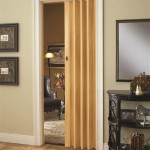The Essential Aspects of Interior Door Casings
Door casings, also known as architraves or trims, are the decorative and functional elements that frame interior doorways. They not only enhance the aesthetic appeal of a room but also serve essential purposes in terms of structural integrity and insulation. This article explores the key aspects of interior door casings, providing insights into their materials, styles, and installation considerations.
Materials for Interior Door Casings
Interior door casings are typically crafted from various materials, including wood, Medium-Density Fiberboard (MDF), and Polyvinyl Chloride (PVC). Each material offers unique advantages and drawbacks:
- Wood: Adds a touch of natural beauty and warmth to a space. However, it is susceptible to warping and requires regular maintenance.
- MDF: A cost-effective option that is resistant to moisture and warping. However, it may lack the same visual appeal as wood.
- PVC: Durable and low-maintenance, but may not provide the same level of aesthetic value as wood.
Styles of Interior Door Casings
Door casings come in a wide range of styles, allowing them to complement different interior design aesthetics. Some popular styles include:
- Flat: A simple and understated design that fits in with modern and contemporary interiors.
- Fluted: Features vertical grooves that add a touch of texture and interest.
- Beaded: Incorporates a series of small beads along the edges for a more traditional look.
- Ogee: An elegant and curved profile that adds a decorative element to doorways.
Installation Considerations for Interior Door Casings
Proper installation is crucial to ensure the functionality and aesthetics of interior door casings. Here are some key considerations:
- Measuring and Cutting: Measure the height and width of the doorway accurately before cutting the casings to size.
- Fitting the Stiles: Start by installing the vertical pieces (stiles) and secure them to the door jamb using finishing nails.
- Attaching the Head Casing: Fit the horizontal piece (head casing) on top of the stiles and nail it in place.
- Caulking and Painting: Fill any gaps between the casings and the wall with caulk and paint the casings to match the door and wall.
Conclusion
Interior door casings play a vital role in the aesthetics, functionality, and structural integrity of a home. By understanding the materials, styles, and installation considerations associated with door casings, homeowners and professionals can make informed decisions to enhance the beauty and comfort of their interior spaces.

Interior Doors And More Janellsummer Farmhouse Door Styles

Door Casing Styles And Which Ones Will Suit Your Home Best The Moulding Company

48 Stylish Interior Door Trim Ideas To Transform Your Home Doors

Door Casing Styles And Which Ones Will Suit Your Home Best The Moulding Company

48 Stylish Interior Door Trim Ideas To Transform Your Home

Easy Diy Farmhouse Door Trim

48 Stylish Interior Door Trim Ideas To Transform Your Home Farmhouse Doors

67 Beautiful Door Trim Molding Design Ideas Sigmadoors

Easy Diy Farmhouse Door Trim

How To Create Craftsman Style Door Trim Hometalk








